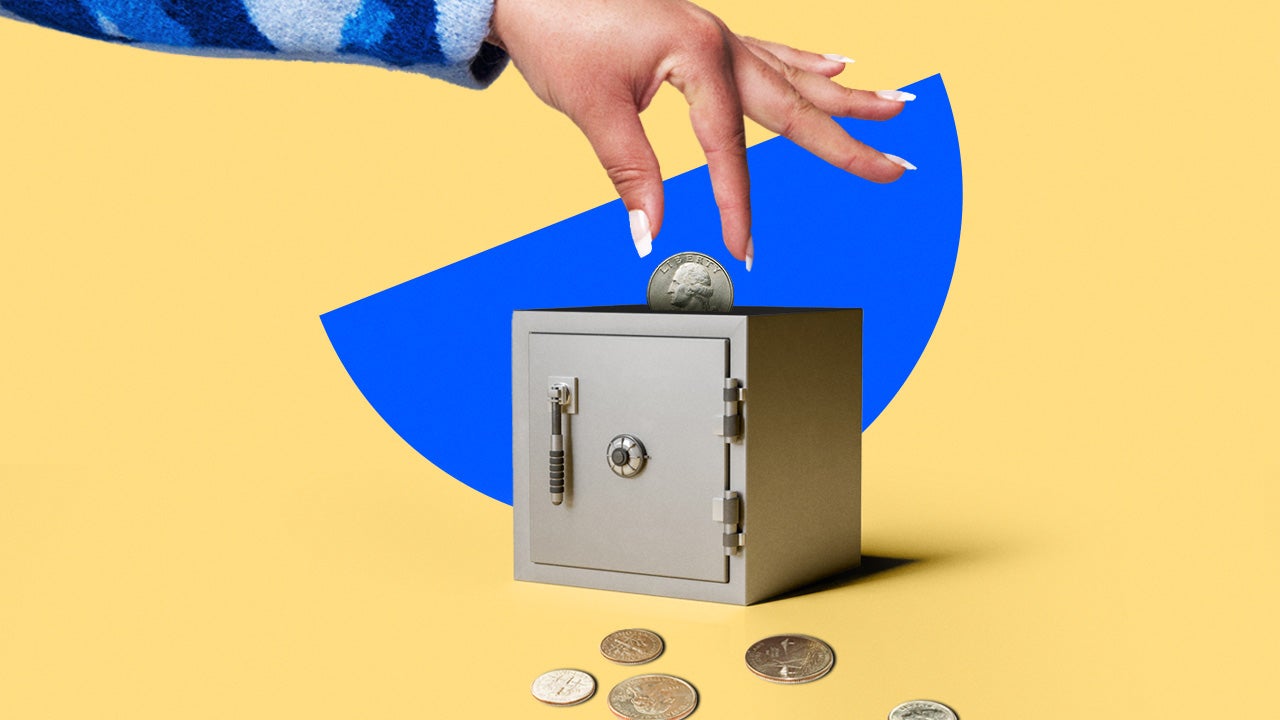Give yourself the gift of a higher-yielding savings account this holiday season

This holiday season, chances are you’ll be buying gifts for others. But you should also give yourself a gift that will reward your bank account in this current high interest rate environment. After 11 Federal Reserve rate increases – with some banks aggressively seeking out new accounts – ’tis the season for savers.
Here’s why now’s the time to give yourself the gift of a high yield saving account that’s outpacing inflation, or a bonus for opening a new account at a different bank.
Why this holiday season is special for savers
The holidays aren’t always kind to those who are striving to save. In December 2021, for example, inflation was at 7 percent while the top savings rate had an annual percentage yield (APY) of a mere 0.55 percent. Most of the time, top savings yields are likely to be lower than inflation. These days, however, top yields on savings accounts and certificates of deposit (CDs) are outpacing inflation.
So, the combination of inflation decreasing and top savings yields increasing has created a favorable rate environment for savers.
4 ways to give yourself a gift of higher rates/more money
1. High-yield savings account
Top savings account yields are actually outpacing inflation. Savings yields are generally variable, so they can go up or down. So that’s why it’s important to periodically make sure you’re getting a competitive APY. A competitive APY a year ago might not be competitive today.
You always want to try to do your best to keep up with inflation — and outpacing inflation is even better.
2. CDs
You can lock in yields that are outpacing inflation with a CD, as opposed to savings accounts which generally have variable yields.. Laddering your CDs – opening up different terms of CDs – is ideal for you in this rate environment, as long as it fits within your financial circumstances. An example of a CD ladder is putting the same amount of money into a one-year CD, two-year CD, three-year CD, four-year CD and a five-year CD.
“With interest rates being as high as they are right now – it’s a great time to set up that ladder,” says Greg McBride, CFA, Bankrate chief financial analyst. “Establish multiple rungs on the ladder. And lock in those great returns for several years out.”
CDs generally have fixed APYs. While shorter-term CDs (a year or less) have some of the top yields, you might also want to consider a longer-term CD to help lock in a competitive APY if yields start to fall.
“With regard to the sort of inverted nature of the curve, caution, don’t get tunnel vision on the higher yields on shorter-term CDs and ignore the longer-term CDs if those are in fact suited for your needs,” McBride says.
3. Bank account bonus
Some banks offer cash promotions for opening a new account. Generally, these are for new customers who haven’t had an account with the bank before or haven’t had an account at the financial institution within a certain amount of time.
The average checking customer has been at their current bank or credit union for 17 years, according to a Bankrate survey published in January. But a lot of online banks didn’t even exist 17 years ago. So it’s worth seeing what options are available to you.
Bank account bonuses generally range from $60-$3,000. Of course, a $3,000 bonus is likely to require a larger deposit – or more effort or time – than a $300 reward.
Banks that offer new account bonuses might not have competitive APYs. So factor this into your decision – especially if you’re opening a savings account.
4. Bank referral bonus
Some banks pay you to refer friends or family to open an account.
This could be a way to help someone you know while earning some cash for your effort, if you happen to really like your bank or credit union.
Review and understand the terms and conditions of an offer like this to make sure you’ll qualify to receive the bonus.
Consider adding an online-only bank to your banking portfolio
Having a checking account at a brick-and-mortar bank is fine — as long as you’re not paying fees. But it’s likely that you’ll get the most competitive yields at an online FDIC-insured bank — whether it’s with a savings account, a money market account or a CD.
Money in a checking account at your neighborhood bank might be earning a yield less than the national average. For instance, here are the national averages for savings accounts and CDs compared with top yields at competitive banks.
| Product/term | National average as of Nov. 30 | Top yield as of Nov. 30 |
|---|---|---|
| Savings account | 0.61 percent APY | 5.40 percent APY |
| One-year CD | 1.74 percent APY | 5.75 percent APY |
| Five-year CD | 1.43 percent APY | 4.75 percent APY |
And here’s some of the largest banks and their standard savings APYs:
- Chase: 0.01 percent APY
- Wells Fargo: 0.15 percent APY
- Bank of America: 0.01 percent APY
What to watch out for
As a rule, research any bank thoroughly to make sure it’s the right one for you. Make sure your balances are within FDIC limits and guidelines and that you have the minimum amount required to open the account and also to waive monthly maintenance fees.
For CDs, make sure you won’t need the money before the term ends because CDs generally have early withdrawal penalties.
You probably don’t want to switch banks just to receive a bonus. Banking is generally a long-term relationship, and because it’s common enough for people to keep the same checking account for many years, you want to choose your bank wisely.
Read the terms and conditions for any bank account bonus before you open the account. The last thing you want to do is open the account and learn that you aren’t able to comply with the rules or that you didn’t follow them.
The bottom line
There are currently opportunities to earn more than the rate of inflation in top-yielding savings accounts and CDs. But these opportunities might not be available for long, so it’s important to act soon if you think these are right for you.






